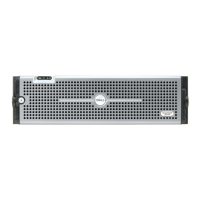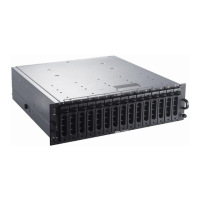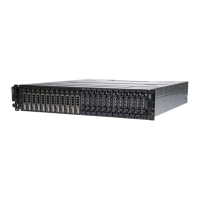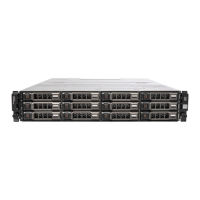A REFERENCE GUIDE FOR OPTIMIZING DELL™ MD1000 SAS SOLUTIONS VER A00
PAGE 22 5/06/2005
The following procedure describes how to migrate the physical disks from one controller to another:
1. Shut down the system from which the physical disks are being moved.
2. Shut down the server of the receiving controller if it does not have a preexisting virtual disk
configuration.
3. Place the physical disks into the new enclosure.
4. Start up the system connected to the receiving controller.
5. Use Server Administrator’s Import Foreign Configuration wizard to import the migrated virtual
disks on the receiving controller.
Importing Migrated Virtual Disks
After migrating the physical disks, Server Administrator enables you to import the virtual disks or
“foreign” configuration that reside on the relocated physical disks.
To be imported, the foreign configuration must contain a virtual disk that is in either “Ready” or
“Degraded” state. For proper completion of this task, all of the virtual disk data must be present. If
the virtual disk is using a redundant RAID level, the additional redundant data does not need to be
present. For example, if the foreign configuration contains one side of a mirror in a RAID 1 virtual
disk, then the virtual disk is in a degraded state and can be imported. On the other hand, if the
foreign configuration contains only one physical disk that was originally configured as a RAID 5
using three physical disks, then the RAID 5 virtual disk cannot be imported.
In addition to the virtual disks, a foreign configuration may consist of a physical disk that was
assigned as a hot spare on one controller and then moved to another controller. The Import
Foreign Configuration wizard imports the new physical disk as a hot spare. If the physical disk was
a dedicated hot spare on the previous controller, but the virtual disk to which the hot spare was
assigned is no longer present in the foreign configuration, then the physical disk is imported as a
global hot spare.
If a physical disk contains all or some portion of a foreign configuration, then Server Administrator
displays the physical disk state as “Foreign.”

